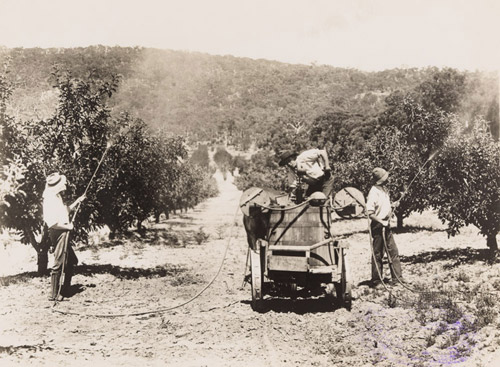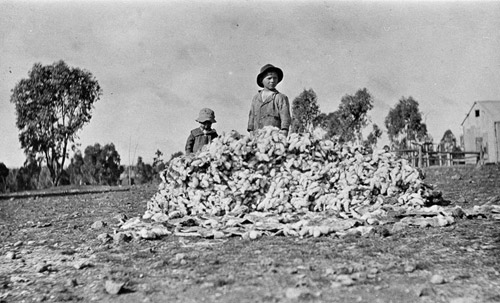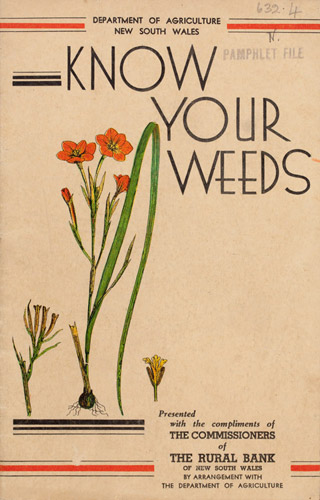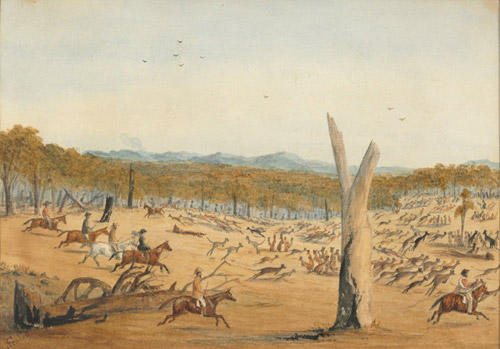Pests
Pests, diseases and weeds are a constant risk for primary producers, as they can have a serious impact on agricultural production. Invasive weeds such as prickly pear, lantana, St. John's Wort and various grasses and thistles, can overrun pastoral country, killing crops, poisoning livestock and choking out native vegetation.
Insects such as grasshoppers and locusts are responsible for widespread crop damage and at times appear in devastating swarms across inland New South Wales and Queensland. Fruit flies are among the most destructive pests of citrus and deciduous fruits in Australia. Various measures, including insecticides and chemical treatments, have been used in the prevention and control of pests.
The Australian farmers' chart: specifically prepared for farmers, new settlers, graziers, pastoralists, fruit growers, throughout Australia, compiled by Harry H. Davey. 1940s. Printed. POSTERS 809
This 1940s illustrated guide for farmers (above) shows a variety of common insect pests and weeds which have a detrimental effect on crops, grazing land and property. The chart includes details on taxonomy, habitat and the treatment of various pests, as well as general advice for the farmer. It also lists 18 bird ‘friends’ of the farmer - 'which on no account should be destroyed'.
 Spraying fruit trees, Victoria, from photographs collected by Rev James Colwell protraying rural and agricultural scenes, ca. 1921-1924. Photograph. PXB 310/127
Spraying fruit trees, Victoria, from photographs collected by Rev James Colwell protraying rural and agricultural scenes, ca. 1921-1924. Photograph. PXB 310/127 Most invasive pest animals are introduced species that are, or have the potential to become, established in the wild. As well as competing with native wildlife for food and habitat, they prey on livestock and their grazing puts pressure on pastures, crops and native plant communities.
By the 1870s large scale destruction of animals – including rabbits, dingoes and kangaroos – was not unusual, especially in times of drought, as a means of controlling the population and alleviating damage to agriculture. In 1882 the rounding up and destruction of 'noxious' animals was acknowledged in the NSW Pastures and Stock Protection Act.
Even native animals can become destructive if their numbers are excessive. Kangaroo culling or drive was derived from the Aboriginal hunting method of beating bushes and woods to flush game into an enclosed space, similar to the scene depicted below. Thousands of animals could be killed using this technique.
European rabbits were first introduced into Australia in 1859; by the 1920s their numbers had reached plague proportions. The extent of economic losses caused by rabbits was revealed by the enormous increase in wool and meat production which followed the myxomatosis virus which was successfully introduced in the 1950s, killing over 90% of rabbits at the time.
 Pile of rabbit skins from the winter extermination work, Rocky View, Alectown, NSW, by unknown photographer, 1920s. Photograph. At Work & Play collection - 00047
Pile of rabbit skins from the winter extermination work, Rocky View, Alectown, NSW, by unknown photographer, 1920s. Photograph. At Work & Play collection - 00047



